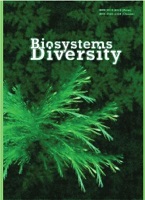Marine pollution effects on the reproduction process of Perinereis cultrifera (Annelida, Polychaeta) in Algeria
Marine pollution effects on the reproduction process of Perinereis cultrifera (Annelida, Polychaeta) in Algeria
Author(s): A. Sebbih, N. Moumeni, N. Z. Belfetmi, T. Daas, O. MaamchaSubject(s): Environmental Geography, Human Ecology, Environmental interactions
Published by: Дніпропетровський національний університет імені Олеся Гончара
Keywords: Perinereis cultrifera; biometric; sexual maturity; vitellogenesis; Algeria;
Summary/Abstract: The Mediterranean Sea is one of the busiest areas worldwide in terms of maritime activity and faces considerable anthropogenic disturbances, such as pollution by hydrocarbons and heavy metals. This study evaluated the environmental status of three sites on the Algerian coast using the annelid polychaete Perinereis cultrifera as a biomonitoring sentinel species. It included different reproductive parameters such as oocyte diameter, frequency distributions, sexual maturity index, biochemical quantitative parameters represented by the vitellogenins and vitellins, and a histological study of the coelome during the reproductive period. The results showed that the females collected from El-Kala (healthy site) have the highest diameter 304.1 ± 24.3 μm during April but the values were increased in Annaba 290.0 ± 21.0 μm and Skikda 245.3 ± 26.7 μm. Significant differences were observed between worms from the three study sites during the three months of the study. Moreover, the size-frequency indicated that a relatively high proportion of females containing mature oocytes was found in April in females collected at El-Kala 52.4%, 46.4% in females collected at Annaba and 36.7% in females collected at Skikda. In addition, regarding the sexual maturity index, the highest values were recorded in April (3.8, 2.9, and 1.9) at the El-Kala, Annaba, and Skikda study sites. However, the biochemical analysis demontrated that the highest mean concentration of vitellogenin was in females of El-Kala (5.3 ± 0.3 µg/mg of coelomic fluid) in April, and the lowest mean concentration was measured in females of Skikda (1.5 ± 0.2 µg/mg of coelomic fluid). Therefore, the highest mean concentration of vitellin was measured in females of El-Kala (4.4 ± 0.2 µg/mg of oocytes) in April, while the lowestmean concentration of vitellin was measured in females of Skikda (1.02 ± 0.2 µg/mg of oocytes) in May. Significant differences were observed between worms from the three sites during the three months of the study. Furthermore, histological observations revealed that oogenesis was asynchronous, with oocytes at different stages of vitellogenesis simultaneously present. The structure of the oocytes of females collected at El-Kala showed intense vitellogenic activity due to the presence of very dense yolk cells. In contrast, the oocytes of the females collected from the two polluted sites (Annaba and Skikda) were small, vitellogenesis presented low intensity, and yolk cells were less frequent at the periphery and less uniform at the cytoplasmic mass; the nucleus was smaller, indicating a slower vitellogenic activity. These observations confirm the previously obtained results.
Journal: Biosystems Diversity
- Issue Year: 31/2023
- Issue No: 1
- Page Range: 113-122
- Page Count: 10
- Language: English

